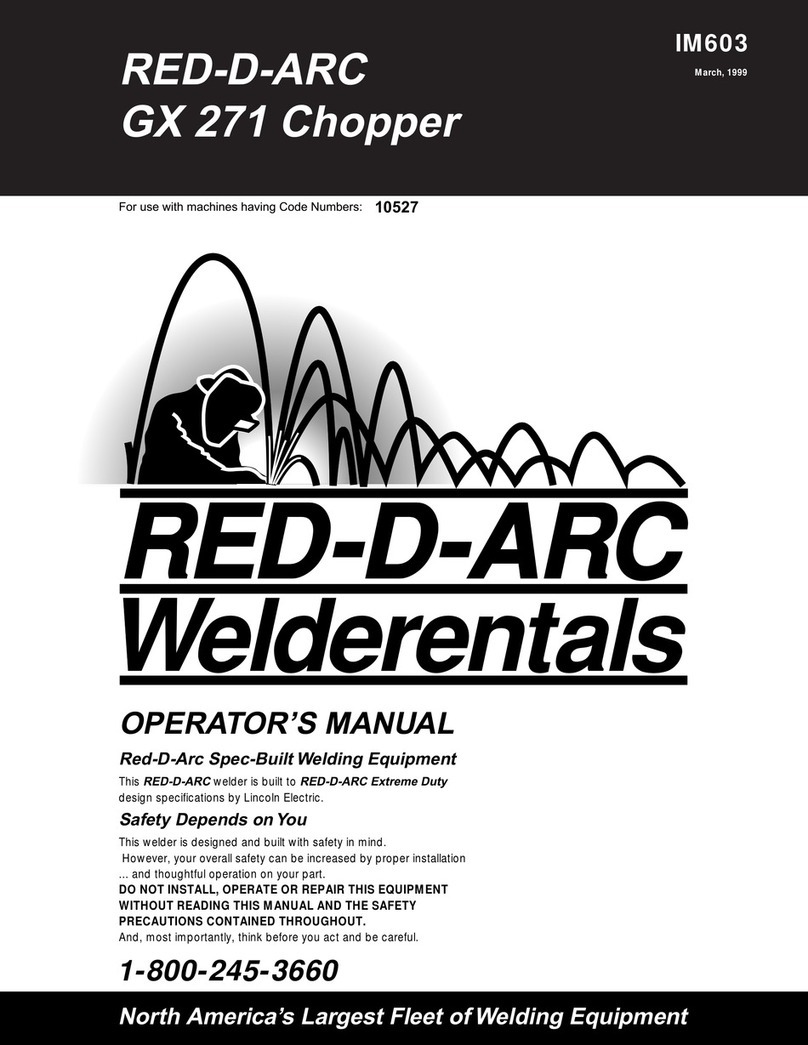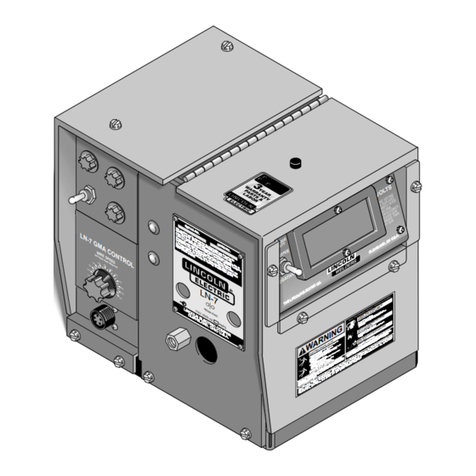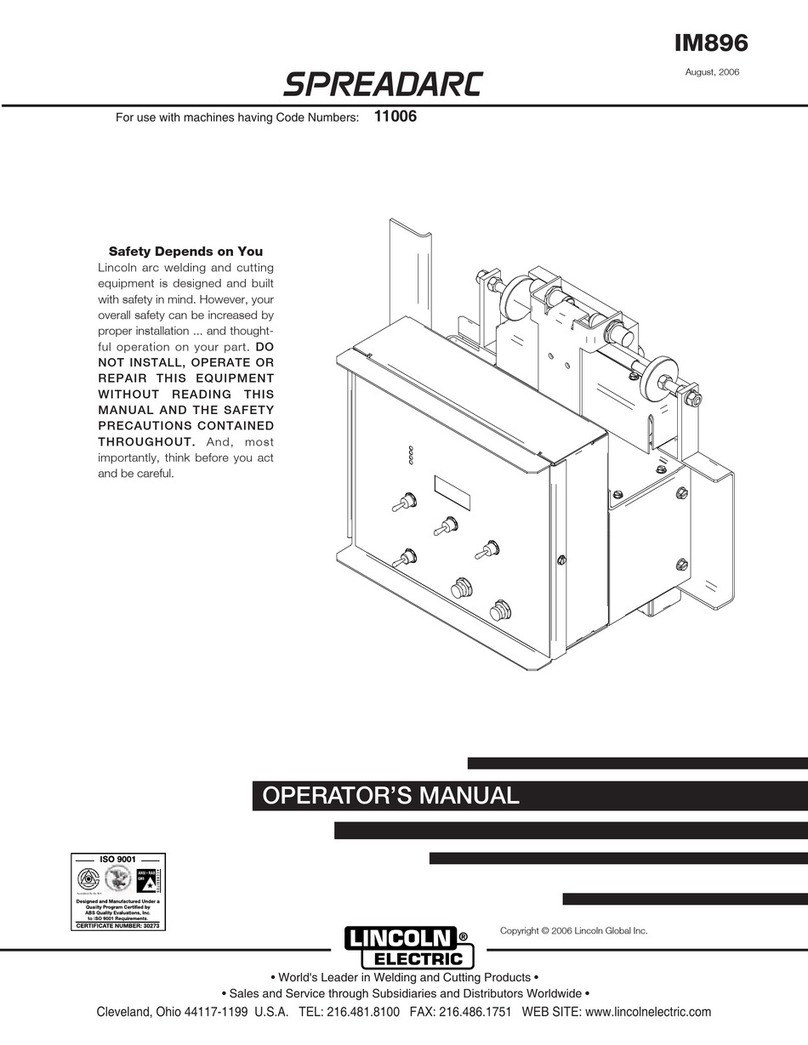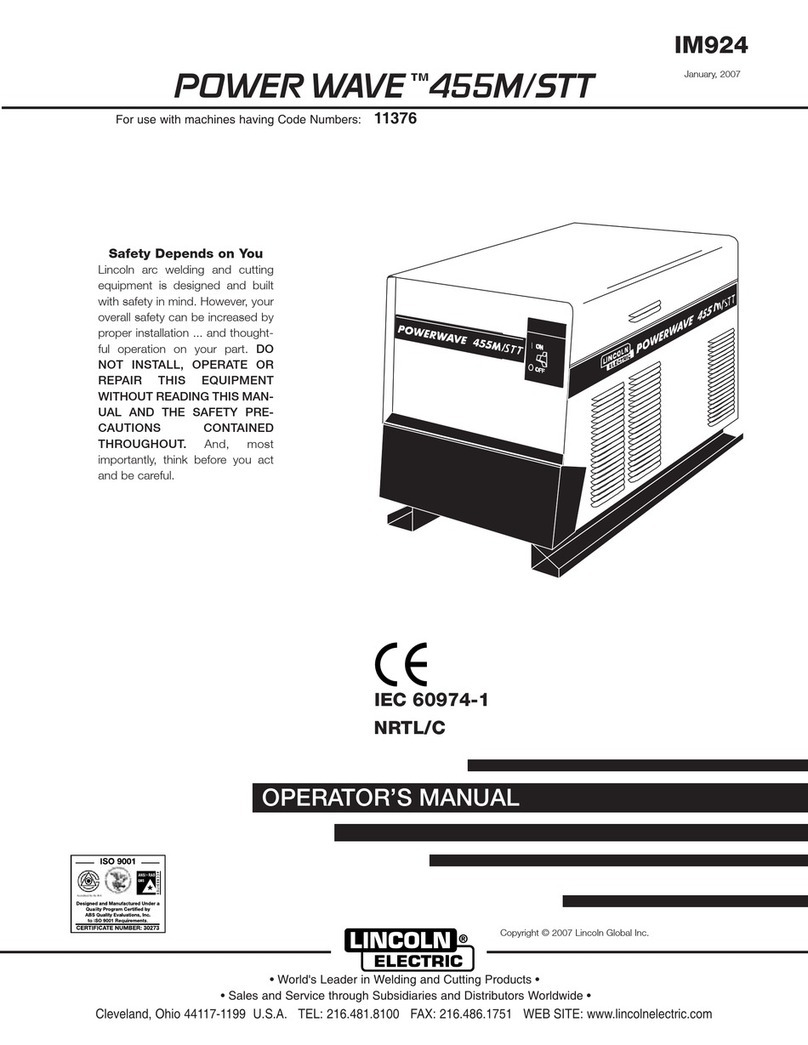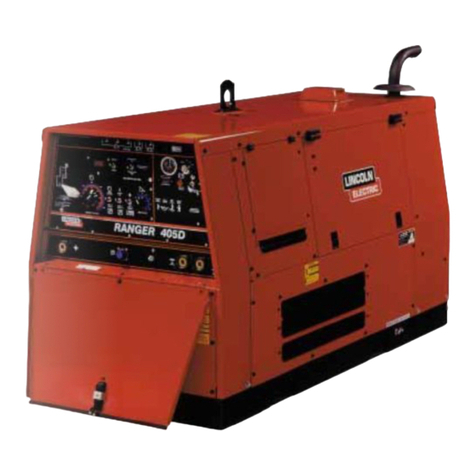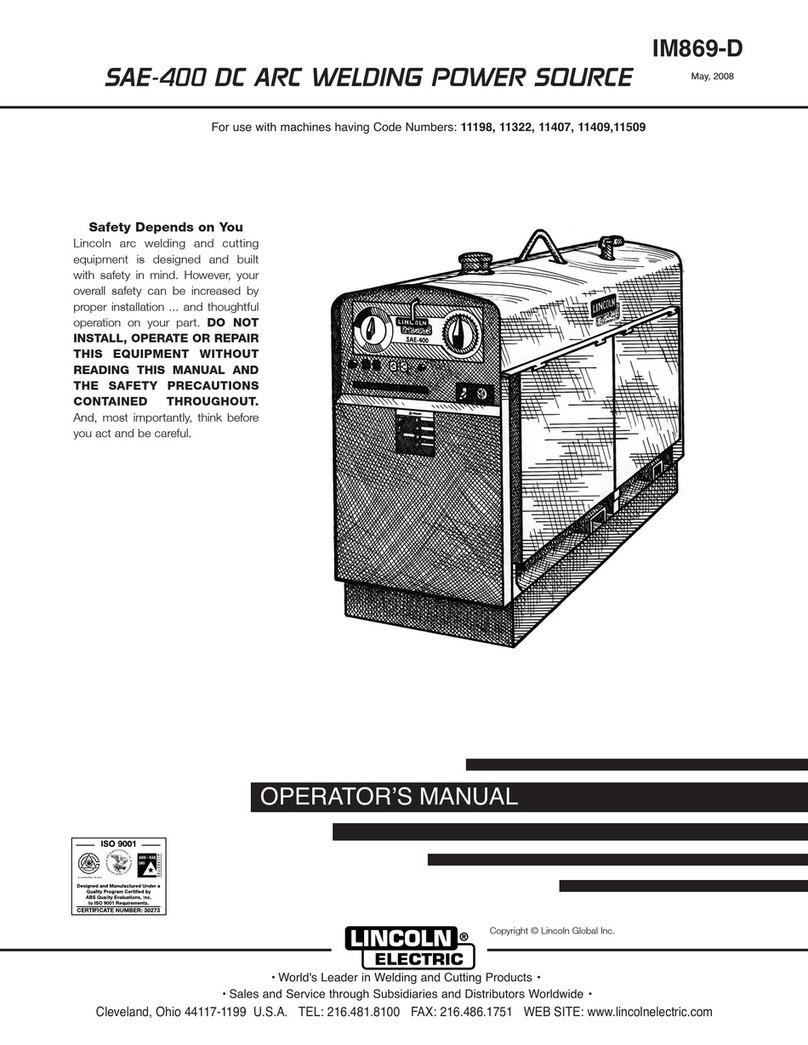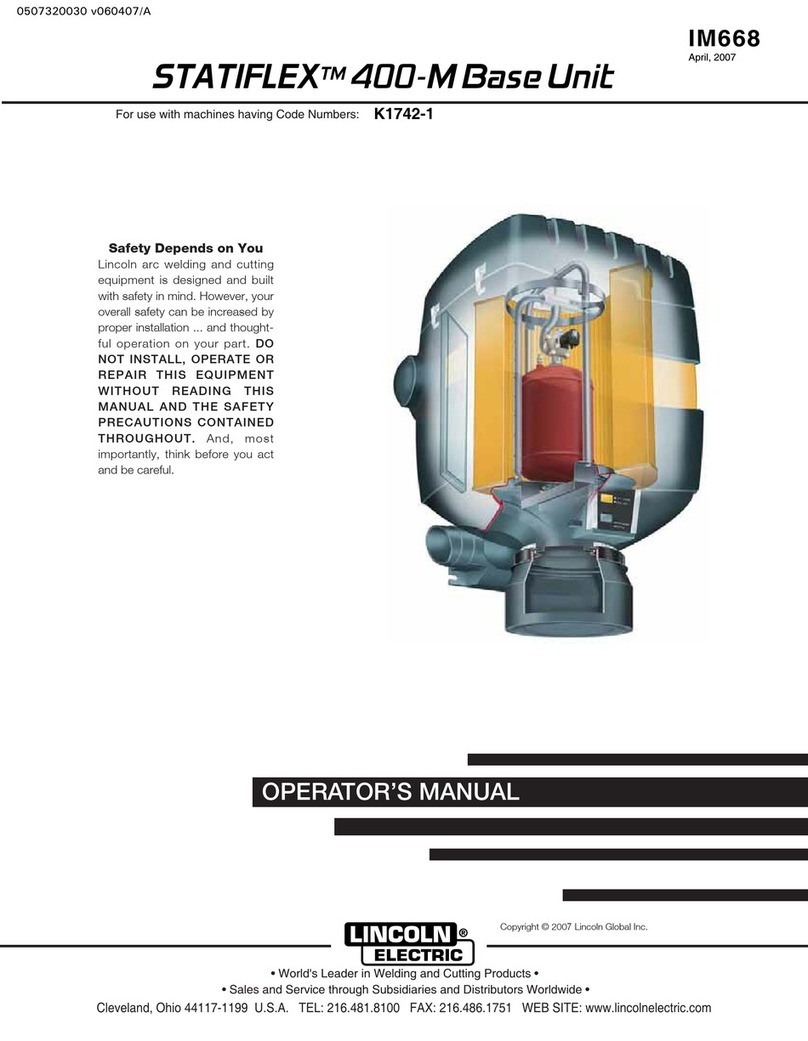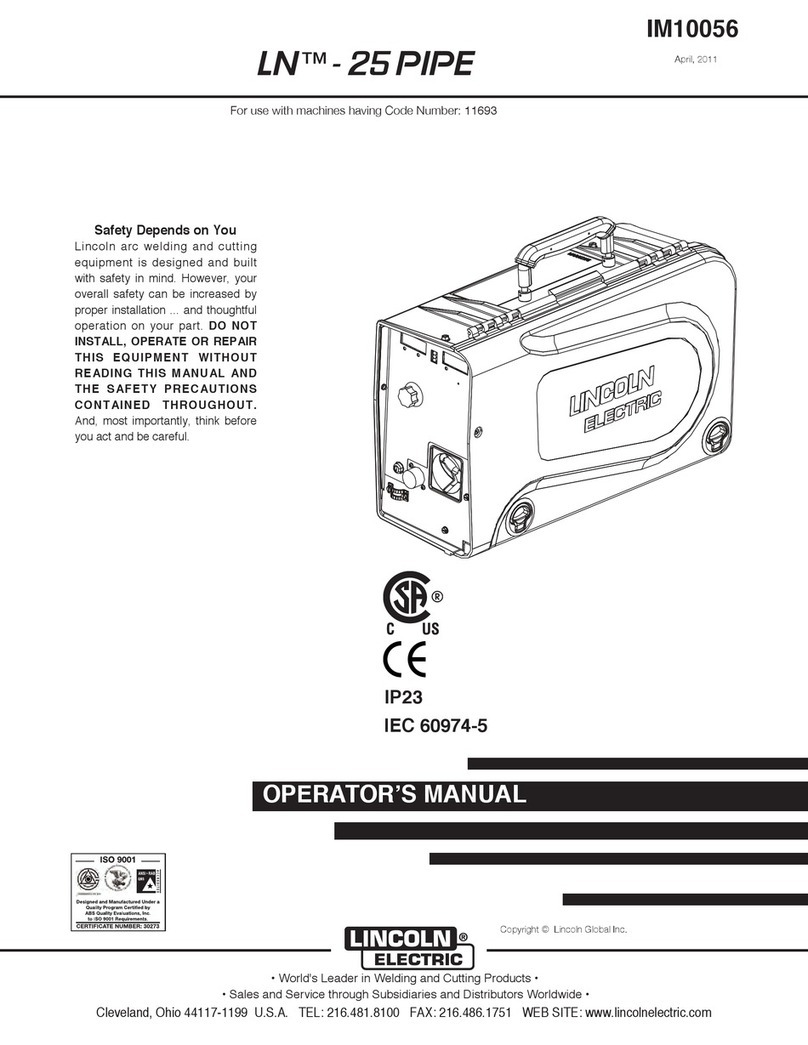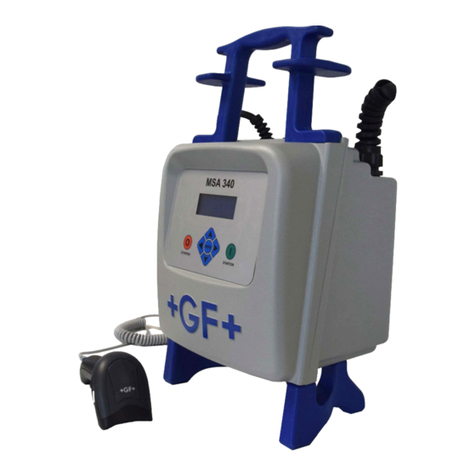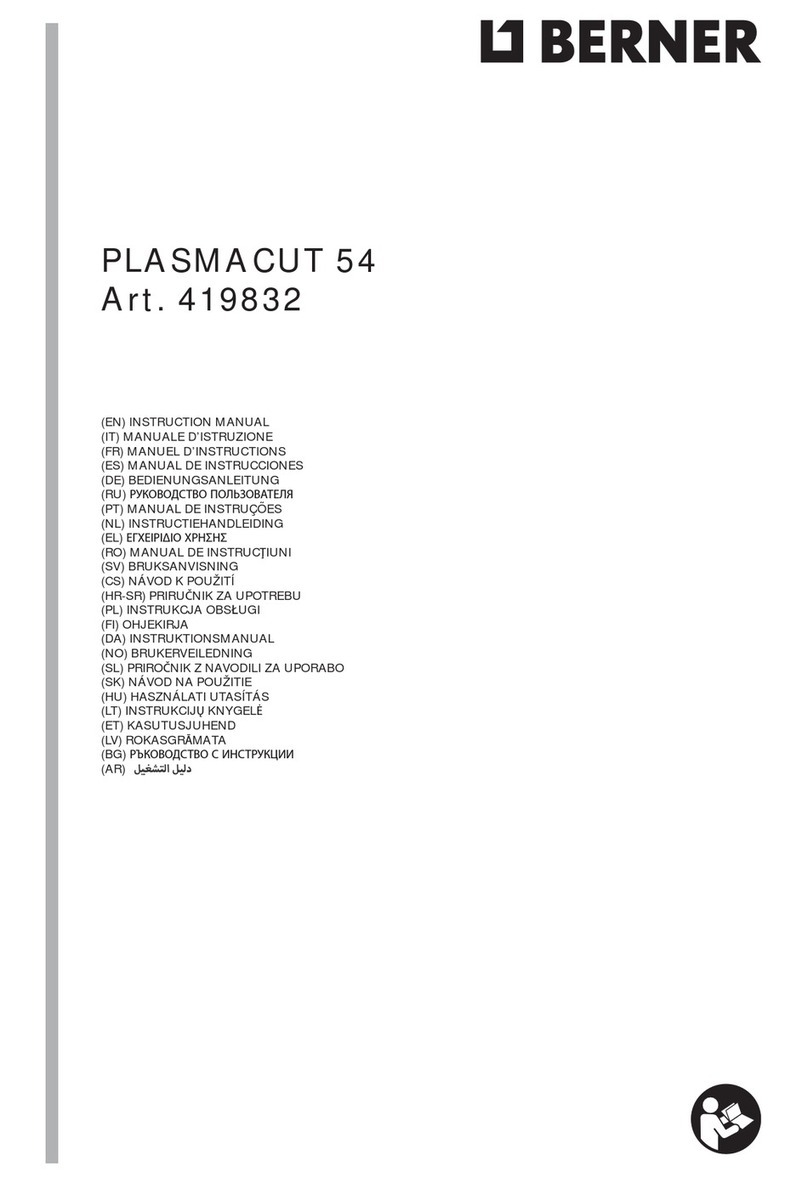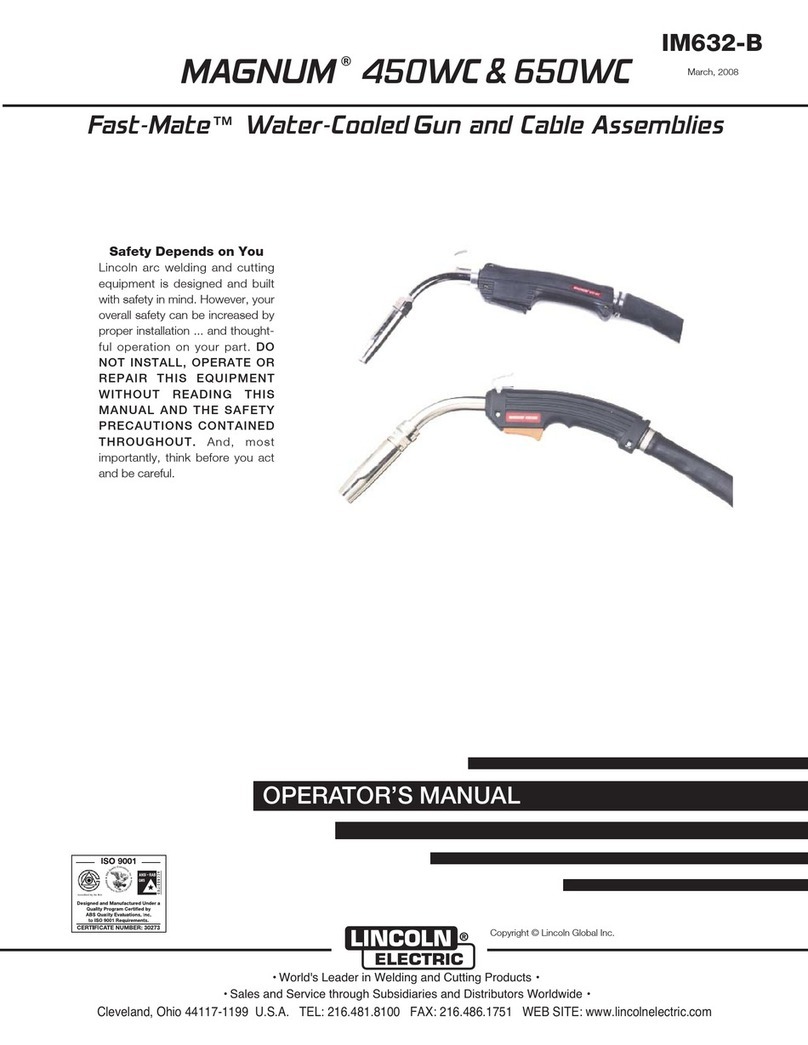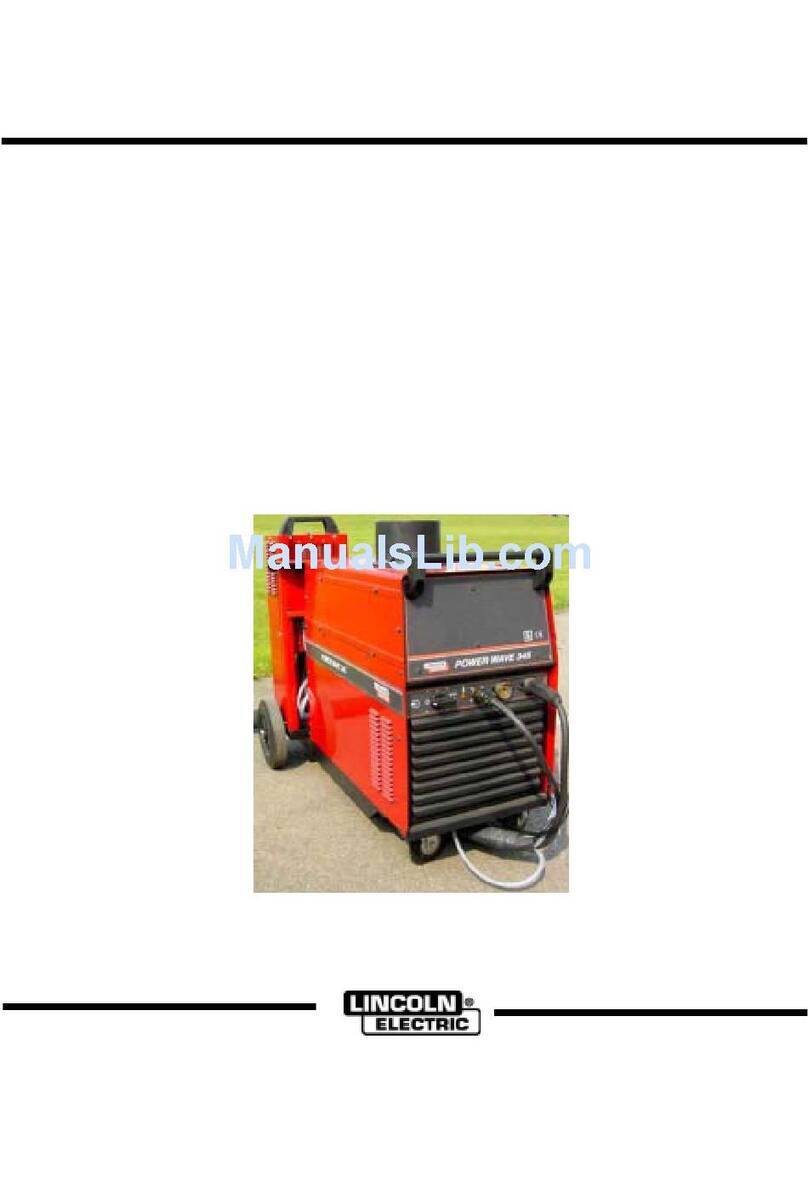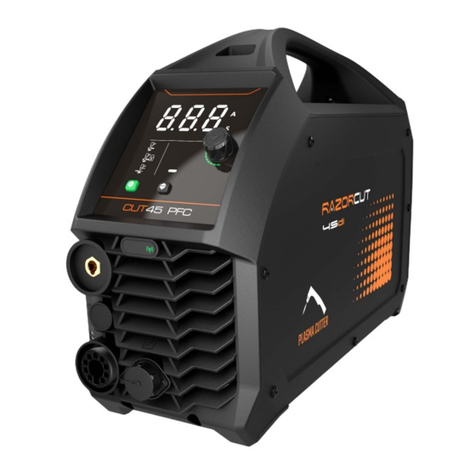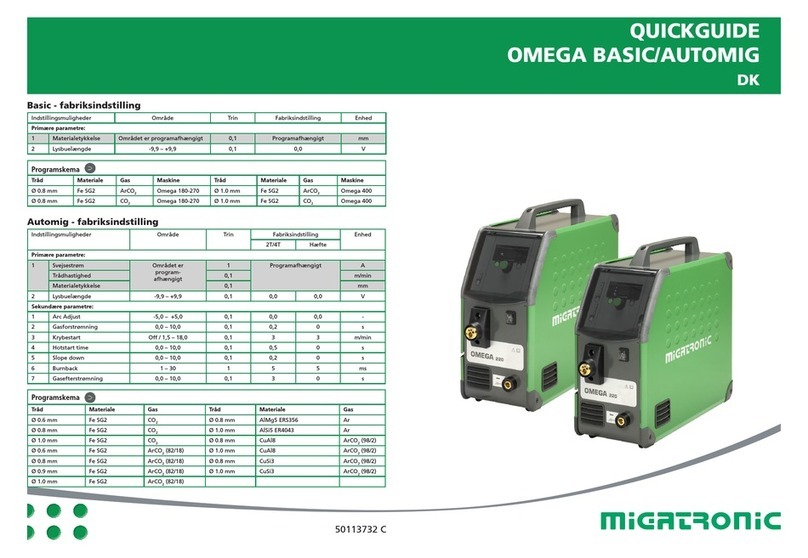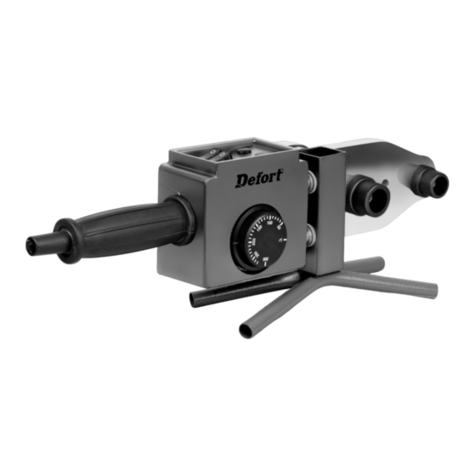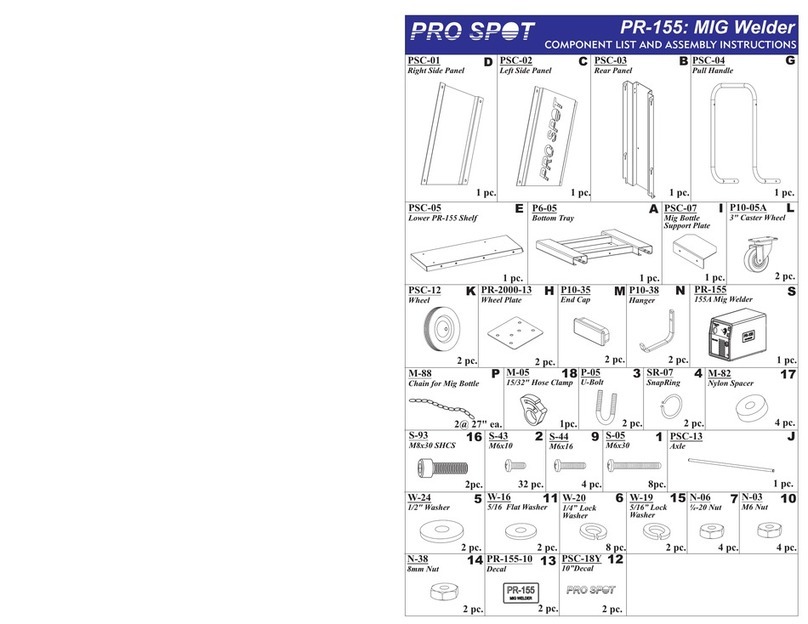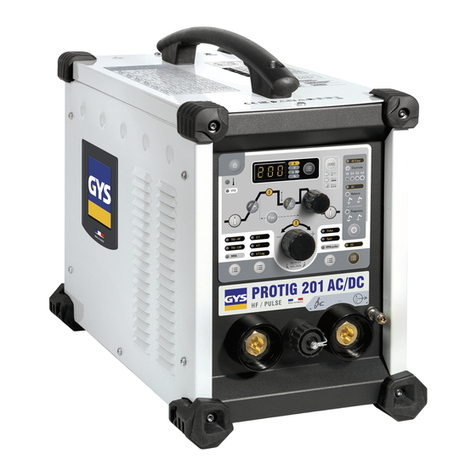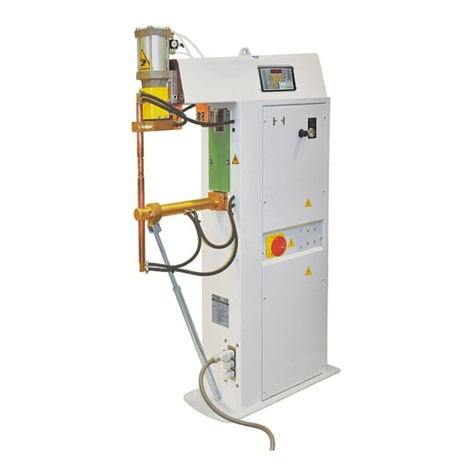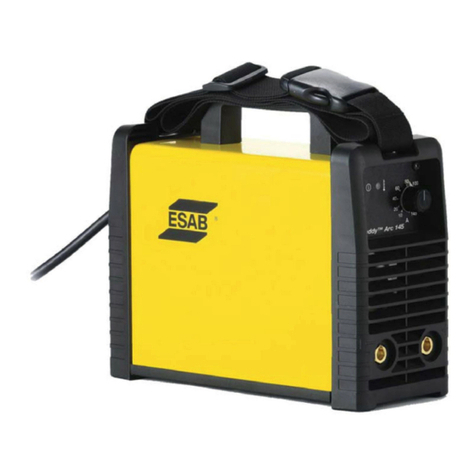Page6 REDI-MIG®Plus215C,255C,255S IM6016
Conformance
Products displaying the C-Tick mark are in conformity with
Australian/New Zealand requirements for Electromagnetic
Compatibility(EMC).Theyare:
• manufactured in conformity with Australian/New Zealand
Standard (Emission):- AS/NZS 3652 ‘Electromagnetic
Compatibility - Arc Welding Equipment’ (Identical to and
reproducedfromBritishStandardEN50199)
• forusingwithotherLincolnElectric/LiquidArcequipment.
• designedforindustrialandprofessionaluse.
Introduction
All electrical equipment generates small amounts of electro-
magnetic emission. Electrical emission may be transmitted
throughpowerlinesorradiatedthroughspace,similartoaradio
transmitter. When emissions are received by other equipment,
electrical interference may result. Electrical emissions may
effectmany kindsofelectrical equipment:other nearbywelding
equipment, radio and TV transmitters and receivers, numerical
controlled machines, telephone systems, computers, etc. Be
aware that interference may result and extra precautions may
berequiredwhenaweldingpowersourceisusedinadomestic
establishment.
Installation and Use
The purchaser/user is responsible for installing and using the
weldingequipmentaccordingtothemanufacturer’sinstructions.
Ifelectromagneticdisturbancesaredetectedthenitshallbethe
responsibility of the purchaser/user of the welding equipment
to resolve the situation with the technical assistance of the
manufacturer. In some cases this remedial action may be as
simple as earthing (grounding) the welding circuit (see note
below). In other cases it could involve constructing an elec-
tromagnetic screen enclosing the power source and the work
complete with associated input filters. In all cases electromag-
neticdisturbancesmustbereducedtothepointwheretheyare
nolongertroublesome.
Note:Theweldingcircuit mayormaynotbeearthedforsafety
reasons according to national codes. Changing the earthing
arrangements should only be authorised by a person who is
competent to assess whether the changes increase the risk of
injury,eg.byallowingparallelweldingcurrentreturnpathswhich
maydamagetheearthcircuitsofotherequipment.
Assessment of Area
Before installing welding equipment the purchaser/user shall
make an assessment of potential problems in the surrounding
area.
Thefollowingshallbetakenintoaccount:
a. Other supply cables, control cables, signalling and
telephonecablesabove,belowandadjacenttothewelding
equipment;
b. Radioandtelevisiontransmittersandreceivers;
c. Computerandothercontrolequipment;
d. Safetycriticalsafetyequipment,eg.guardingofindustrial
equipment;
e. The healthof peoplearound, eg. theuse ofpacemakers
andhearingaids;;
f. Equipmentusedforcalibrationormeasurement;
g. Theimmunityofotherequipmentintheenvironment.The
purchaser/user shall ensure that other equipment being
used in the environment is compatible. This may require
additionalprotectionmeasures;
h. Thetimeofthedaythatweldingorotheractivitiesaretobe
carriedout.
The size of the surrounding area to be considered will depend
onthestructureofthebuildingandotheractivitiesthataretaking
place.Thesurroundingareamayextendbeyondtheboundaries
ofthepremises.
Methods of Reducing Emissions
Mains Supply
Welding equipment should be connected to the mains supply
accordingtothemanufacturer’srecommendations.Ifinterference
occurs,itmaybenecessarytotakeadditionalprecautionssuch
as filtering the mains supply. Consideration should be given
to shielding the supply cable of permanently installed welding
equipmentinmetallicconduitorequivalent.Shieldingshouldbe
electricallycontinuousthroughoutitslength.Theshieldingshould
beconnectedtotheweldingpowersourcesothatgoodelectrical
contactismaintainedbetweentheconduitandtheweldingpower
sourceenclosure.
Maintenance of the Welding Equipment
Theweldingequipmentshouldberoutinelymaintainedaccording
tothemanufacturer’s recommendations.Allaccessand service
doorsandcoversshouldbeclosedandproperlyfastenedwhen
the welding equipment is in operation. The welding equipment
should not be modified in any way except for those changes
and adjustment covered in the manufacturer’s instructions.
In particular, the spark gaps of arc initiation and stabilising
devices should be adjusted and maintained according to the
manufacturer’srecommendations.
Welding Cables
The welding cables should be kept as short as possible and
should be positioned close together, running at or close to the
floorlevel.
Equipotential Bonding
Bonding of all metallic components in the welding installation
and adjacent to it should be considered. However, metallic
componentsbondedtotheworkpiecewillincreasetheriskthat
the operator could receive a shock by touching these metallic
components and the electrode at the same time. The operator
shouldbeinsulatedfromallsuchbondedmetalliccomponents.
Earthing of the workpiece
Wheretheworkpieceisnotbondedtoearthforelectricalsafety,
norconnectedtoearthbecauseofitssizeandposition,eg.ship’s
hull or building steelwork, a connection bonding the workpiece
to earth may reduce emissions in some, but not all instances.
Care should be taken to prevent the earthing of work pieces
increasingtheriskofinjurytousers,ordamagetootherelectrical
equipment.Wherenecessary,theconnectionoftheworkpieceto
earthshouldbemadebydirectconnectiontotheworkpiece,but
insome countrieswhere directconnection isnot permitted,the
bonding should be achieved by suitable capacitance, selected
accordingtonationalregulations.
Screening and Shielding
Selectivescreeningandshieldingofothercablesandequipment
in the surrounding area may alleviate problems of interference.
Screening of the entire welding installation may be considered
forspecialapplications.*
* Portions of the preceding text are contained in AS/NZS3652:
‘ElectromagneticCompatibility-ArcWeldingEquipment’.
INSTRUCTIONS FOR ELECTROMAGNETIC COMPATIBILITY
Thisweldingmachinemustbeusedbytrainedoperators
only.Readthismanualcarefullybeforeattemptingtouse
theweldingmachine.
WARNING

